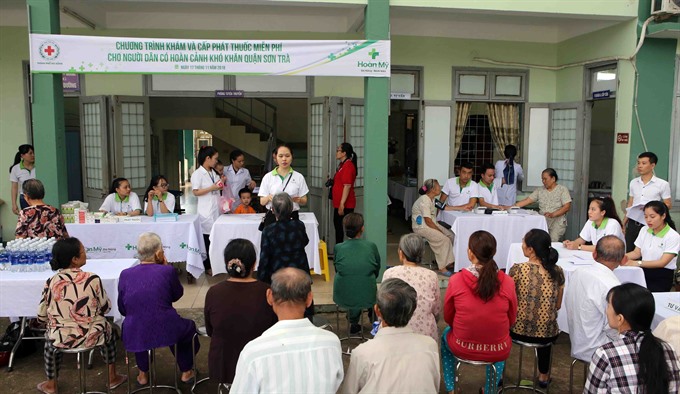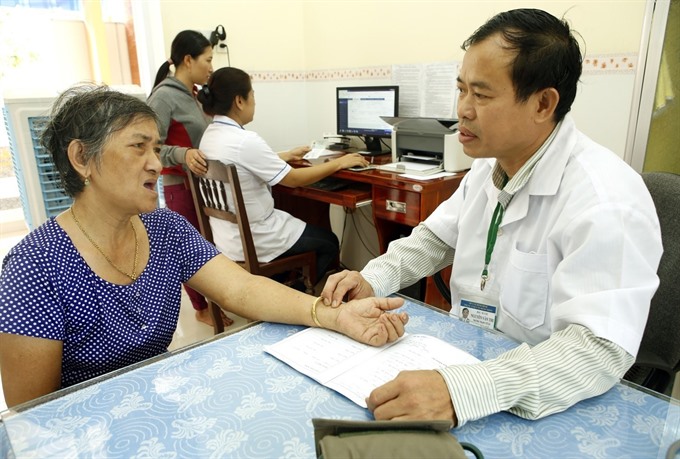 Society
Society

Việt Nam planned to improve its primary healthcare staff to provide comprehensive care for individuals and families over the next ten years, a senior health ministry official said.
 |
| Residents of Sơn Trà District in central Đà Nẵng City gather for check up at the local health centre. — VNA/VNS Photo Trần Lê Lâm |
HÀ NỘI — Việt Nam planned to improve its primary healthcare staff to provide comprehensive care for individuals and families over the next ten years, a senior health ministry official said.
“While some hospitals at central-level receive 5,000-6,000 patients a day, only 2-3 patients visit commune health stations,” said Minister of Health Nguyễn Thị Kim Tiến.
This underlined the need to strengthen the healthcare network at grassroots levels to meet the ever growing needs of residents, save on medical costs and reduce overcrowding at larger hospitals, she said.
Data from other countries showed that between 80 and 90 per cent of people with non-fatal diseases could be treated at grassroots level.
Statistics from the Health Ministry showed that up to 30-40 per cent of patients who visited central-level hospitals could have been treated at provincial level hospitals.
Going down the chain, 30-40 per cent of patients who visited provincial hospitals could have been treated at district health facilities, and a further 30-40 per cent could have been treated at commune health stations instead of district facilities.
Since last year, the ministry has been piloting a commune family medicine plan at 26 medical stations in eight provinces and cities.
Positive results have been recorded at a number of commune health stations including those in Bạc Liêu, Đồng Tháp, Vĩnh Phúc and Bắc Giang provinces which have been treating up to 100 patients a day.
 |
| A doctor checks the pulse of a patient at the Hoài Hảo Commune’s health centre in the south central province of Bình Định. — VNA/VNS Photo Dương Ngọc |
Tiến told a teleconference said the ministry was planning to expand the model nationwide. The conference last week drew the participation of about 12,000 health representatives from across the country.
Thanks to the implementation of the model, Bắc Giang managed to treat about 86,000 people with non-communicable diseases in the first nine months of this year. The rate of hypertensive patients treated by primary healthcare at grassroots level reached 97.3 per cent, and 86.2 per cent for people with diabetes.
Progress was also reported in Vĩnh Phúc. As many as 99.3 per cent of its communal medical stations had obtained national standards. Medical records had been set up for about 51 per cent of the province’s population. All stations had doctors and could conduct 80 per cent of technical services in accordance with Health Ministry regulations.
Sending doctors from district level to commune medical stations to provide check-ups for local residents and train medical staff had proved effective.
Tiến has requested health facilities central levels to lower the number of patients they treat to under 4,000 people a day from 5,000-6,000. In addition, those facilities were asked to dispatch staff to health centres at district and commune levels as well as transfer patients and medicine.
Besides performing their regular duties, medical stations should manage and treat patients with non-communicable and chronic diseases, the minister said.
She urged local health departments to approve list of medicines and technical services they needed and co-ordinate with the health insurance agency for funding.
We needed to enhance people’s awareness of healthcare and the role of primary healthcare at grassroots level, Tiến said. — VNS




